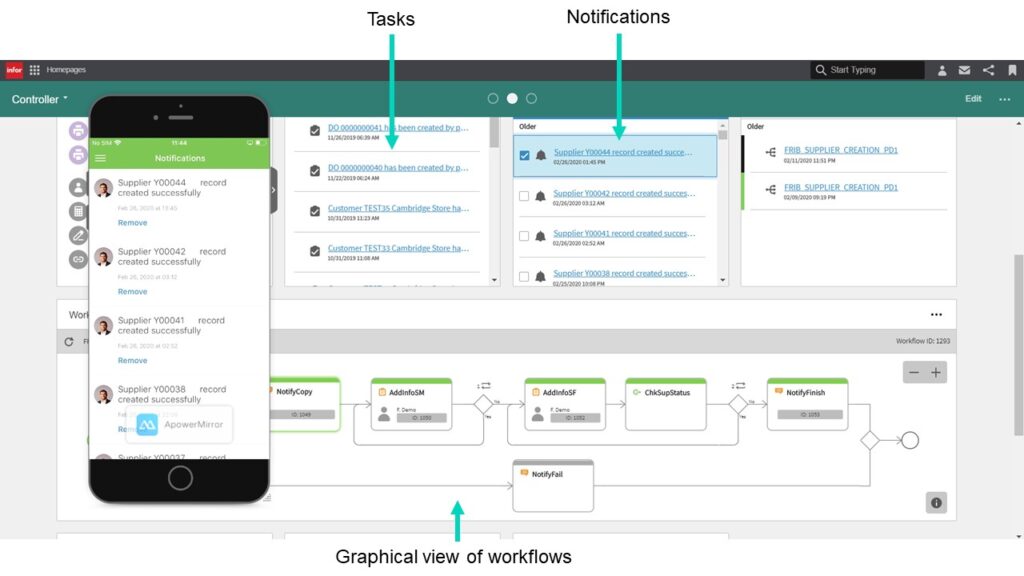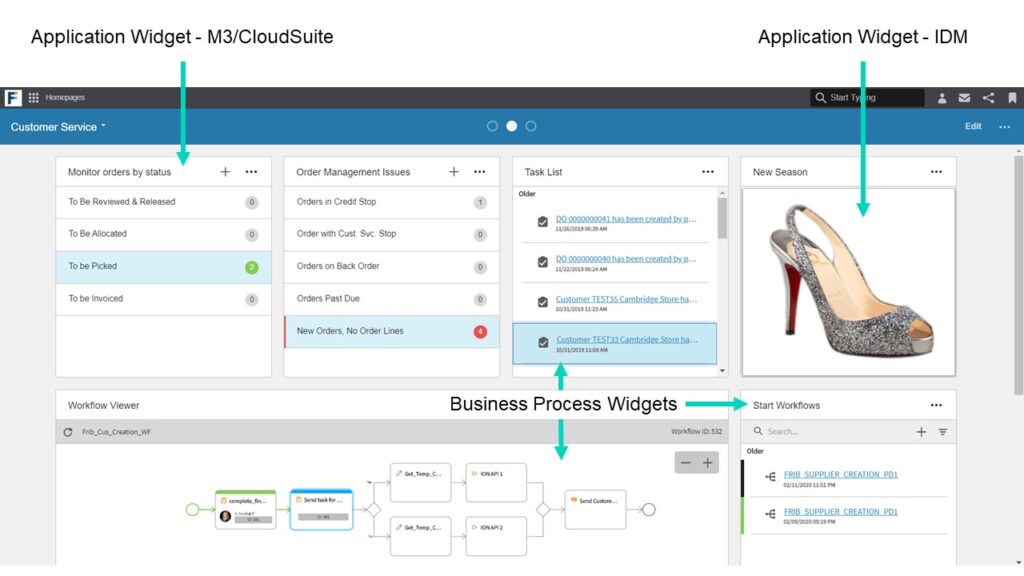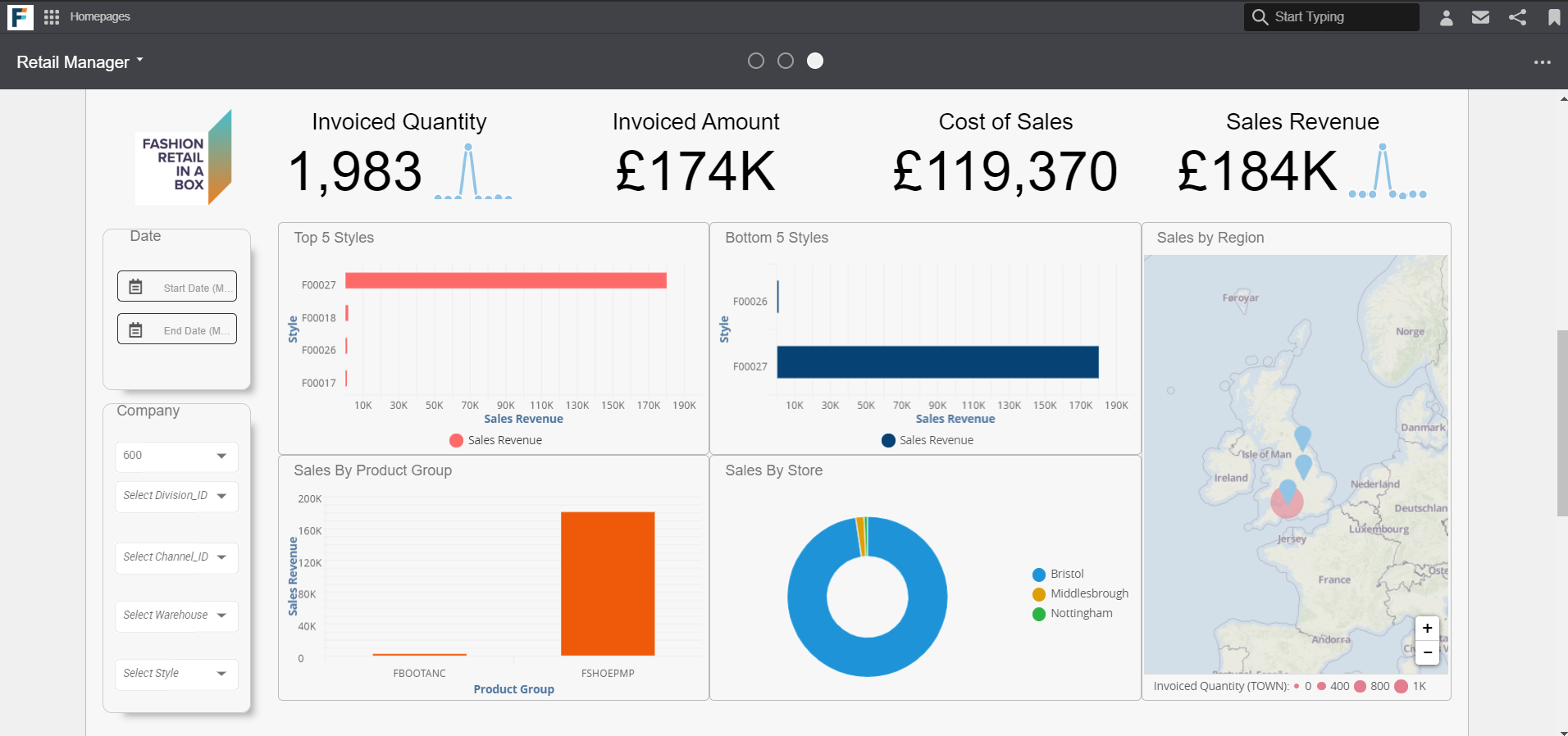Part 3: Bringing information closer to business users with Infor Ming.le
In this four-part blog series, we discuss how businesses can accelerate innovation and create competitive advantage by implementing Infor OS and related solutions.

Problem 1: Multiple information sources
The Ming.le Homepages addresses this by creating a centralized space bridging the information gaps between disparate systems. Built on top of Infor’s powerful ION middleware platform, Ming.le Homepages supports team collaboration, business process improvements and provides users with contextual analytics. An integration platform as a service (iPaaS), ION can easily integrate Infor and third-party enterprise applications, whether they’re on-premise or in the cloud.
Ming.le has been designed with user experience in mind, and business users can access homepages through a web browser.
Problem 2: Multiple applications mean multiple logins
According to a study conducted by the IT service and technical support association HDI, 30% of helpdesk requests were related to resetting passwords, a common problem in a multi-vendor application scenario. While decreasing the efficiency of business users, multiple logins also weaken enterprise data security as businesses cannot enforce or monitor application security and authentication policies.
Ming.le supports single sign-on across applications, allowing users to read data from multiple applications using a single login. This significantly boosts productivity as users only have to log in once and do not need to manage multiple passwords. If you are an enterprise application administrator, you can enforce a strong password policy using single sign-on, preventing data leakage and breaches.
Problem 3: Un-actionable information
Through big data and cloud technologies, modern ERPs are now capable of generating a plethora of information. While having a lot of information can be an asset, it can also drown business users in a sea of information, making it hard for them to find the information they need, quickly. If you rely on email to communicate, information that deserves your attention or requires your action could get lost in your inbox.
While ION connects multiple enterprise applications under the hood, Ming.le routes tasks and information to the relevant business users. If you log in to Facebook, you can see the notifications that require your attention, wherever you are on Facebook. Similarly, with the help of ION Event Management, Mingle Homepages displays tasks that require your attention as notifications.
For example, if an invoice has not been issued for a transaction, you will see a notification on your homepage, allowing you to investigate the cause. If changes have been made to a BOD, you can configure Ming.le to notify you. If a document needs your approval, you will see an actionable notification, which you can click and then proceed to either approve or reject.
Problem 4: Lack of visibility and information overload
The 4th problem is closely related to problem 3. ERPs are accessed by many user groups such as merchandisers, finance personnel, sales executives, and analysts. If your ERP has a static interface, it may be contributing to a poor ERP user experience, as a single interface cannot serve different user groups.
Ming.le Homepages can be personalized to serve a specific user group, allowing them to see the information that is only relevant to their function. What if you are the CIO of the company and do not fit into any of these user groups? For unique business users, homepages can be further personalized so that it shows the key performance indicators (KPIs), metrics, insights, exceptions that need attention, and any other information that the unique user wants to have at their fingertips.
Users can browse existing homepages through the Page Catalog, through which users can view recently created or updated and recently used pages. Ming.le also has a Widget Catalog, which is a library of prebuilt, single-purpose applications facilitating small tasks. When designing homepages, you can add widgets from the Widget Catalog.
For decision makers, Ming.le Homepages offers another benefit—the ability to embed Infor Birst dashboards. Birst is Infor’s business intelligence (BI) and business analytics platform.
Figure 3: Infor Birst business intelligence dashboard on Infor Ming.le
As the embedded Birst dashboard loads on the homepage, decision makers can make quick decisions. Birst dashboards can be drilled down for more information, allowing users to see information in detail.
Buddhika Tudugala
Senior Consultant - Fortude
Related Blogs
Subscribe to our blog to know all the things we do





